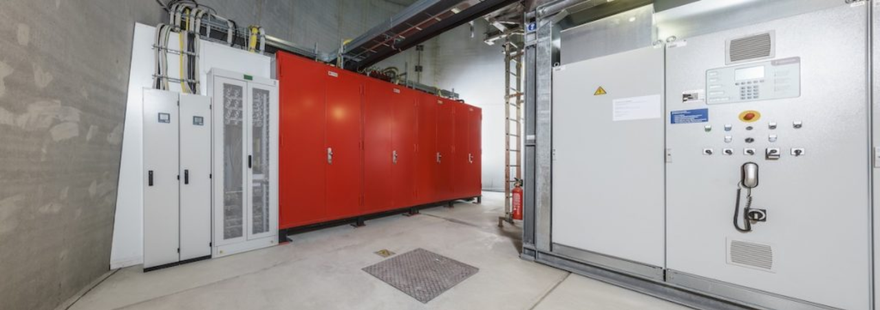
WindCORES is best described as a project, founded in 2018 and based in Germany, that operates data centres inside two wind turbines, making them almost completely carbon neutral. This means that previously unused space becomes usable, even valuable. These data centres are powered by the same wind turbines, while fiber optic cables provide internet connectivity.
The concept began about 2013, when WestfalenWIND realized the electricity grid was too weak to handle the electrical power being produced by its wind turbines during peak wind hours. This meant that power from windfarms was switched off due to grid security issues. WindCORES estimated that this unproduced/ undistributed electricity could power one-third of all German data centers
Wind power that never enters the grid is fed to servers located inside formerly empty, large concrete wind turbine towers. Each tower is typically 13 meters in diameter, and could potentially hold servers throughout most of their 150 meters height. On average 85-92% of the power needed to sustain such a data center comes directly from the host turbine. When there is no wind, electricity is obtained from other renewable sources, including solar farms and hydroelectric power plants, via the electricity grid. It is claimed that a typical German data center releases 430 grams of CO2 per kilowatt hour. WindCORES servers will release 10 grams.
Currently, windCORES has a fully operational data centre in a wind turbine in Paderborn, a city in eastern North Rhine-Westphalia, Germany. Initially, For IT, WestfalenWind IT and Green IT installed four fire-resistant IT safety cabinets, housing 62U server racks, with Fujitsu’s Primergy servers and Eternus storage units.
It has about 150 customers of varying size, co-located in the towers offering cloud solutions. Zattoo, is one of these. It is a carbon-neutral Swiss TV streaming platform with several million monthly. Zattoo joined windCORES in 2020, when it moved one of its six data centers into a wind turbine, 218 channels are encoded with windCORES . By the end of 2024, Zatoo plans to relocate more existing servers to the wind farm, making it Zattoo’s main data center location.
WindCORES has recently opened a larger, second location called WindCORES II at Windpark Huser Klee, a 50.85 MW onshore wind power project, also located in North Rhine-Westphalia, but at Lichtenau. The windfarm was commissioned in 2015. The data centre was built for BMW, occupying three levels (20 meters) of space.
Reflection
Some µs after I had typed in the title of this weblog post, I wondered if it should be changed to A in B. After all, the local bus company is called AtB, which in the local trøndersk dialect means A to B. Yes, this dialect specializes in shortening words, so they are barely understandable, even to other Norwegians. While A and B refer to random locations/ stops in the bus network, A refers to any type of product that can be made or stored in a container B, in the original example. More specifically, my reasoning was that readers could be asked to reflect on: What can be housed in a wind turbine mast? or, possibly: Where can data centres be located? In the end, I decided to take the easiest action and do nothing.
There is no reason why other companies in other places in the world could not open data centres in existing wind turbines, even in Trøndelag.


Co-Locating different and complementary services like in this example makes a lot of sense.
Especially as most of the energy is used on site thus having very little transmission loss.
A great many of the populace, especially those in the urban connurbations are un-informed or even ignorant of the dimensions of transmission loss. I have been informed that some where in the region of 10-15% of produced energy is ‘lost’ in transmission from the wind turbines placed in out of the way places, e.g. the Norwegian Sea; the North Sea, Bremangerlandet, Fitjar, et al.; and to the consumers in and around Oslo, Trondheim, and many other cities and towns.
Just consider, that by siting the wind turbines in and around the cities and towns, one could reduce energy costs by say 10%.
Nor would there be so much thermal loss either, the western world is starting to seriously worry about global warming, and by reducing electrical transmission loss one would also much reduce that contribution to global warming.